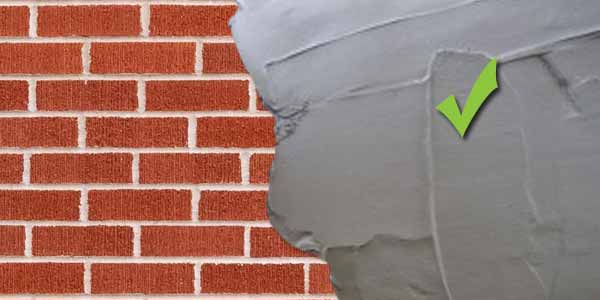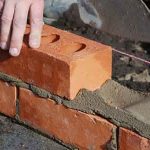Engineering bricks are a common material used on many different construction projects. They provide a high level of strength and do not absorb large amounts of water. This is the reason they are used in specific jobs, such as ground works, retaining walls and damp-proof courses.
If your engineering bricks are above ground level and visible, you might decide that you want to render them. These bricks are not as pleasing on the eye as standard bricks, so you might decide a render will make them more aesthetically pleasing.
A render is a coat of cement that you can apply to external walls. It is made of sand and cement and can add a textured or smooth appearance. But you might be wondering whether render sticks to engineering bricks and whether any prep work is needed before you apply it?
As engineering bricks are harder and soak up less moisture, you will need to carry out some extra work before you apply the render. However, with the right approach, it is possible to add render to engineering bricks and enhance their appearance.
To apply the render, you will first need to prepare the bricks correctly. This can be done by creating a key. A key can be created using several different methods, to help the render bond with the bricks.
Three of the most popular methods are:
- Creating a bond with SBR (Styrene Butadiene Rubber) You can mix this with water then apply a coat prior to rendering.
- Fit Expanded Metal Lathe sheeting. This is fitted to the walls before the render is applied.
- Raking out the joints and grinding a key into the bricks.
Why and How Does the Prep Differ for Engineering Bricks?

Engineering bricks have a different design to standard bricks. This is because they are used for different purposes. They have a solid design as they can handle more weight and they won’t absorb water.
The texture on the surface of an engineering brick is smooth and less porous than other bricks. Therefore, you need to take a different approach when you apply render to them.
Other bricks such as standard bricks and concrete blocks have a rough surface. This creates an ideal key for render to stick to. However, engineering bricks don’t have the same characteristics, which is why you need to carry out different preparatory work to create a key.
A key is made by altering the surface of the brick so that it can accept the render. Fortunately, there are several different options available to help achieve this. The option you choose can depend on the budget, the time, and the effort you want to put into the job.
The first option will involve using an initial bonding coat that you apply to the bricks. You will need to mix SBR with water in a 50/50 mix. You can then apply this directly to the bricks with a brush or a roller.
The SBR will create a good key as it dries. Once it becomes tacky, you can then apply your scratch coat. Once this has dried, you can finally apply the topcoat of render. This method will ensure a solid finish that will last.
If the budget for the work is smaller, a cheap option involves creating a key by raking out the joints and then grinding the brick faces. You will essentially grind lines into the bricks, and this will allow the render to grip to them.
The final option you have, is to use Expanded Metal Lathe. This mesh is made for rendering and you fit it to the bricks. Once it has been held in place with the correct fittings, you can then render over the top of it. The mesh helps to add strength while creating a good key, this will help the finished render to last much longer.
What Materials and Tools Will You Need to Render Engineering Bricks?
The materials that you need to render will vary. It will depend on the method that you are using.
Firstly, you’ll need the right materials to create the basic render. For this, you will need to use 4-6 parts of plastering sand or rendering sand with 1 part cement and 1 part lime (or a plasticiser). To mix the render you will need an electric paddle mixer and a paddle. If you want to speed up the process, you can also use a cement mixer if you like.
If you are opting for the method of grinding lines into the bricks then you will need an angle grinder and a masonry or stone grinder disc. For raking the joints, you will need a raking tool. You can use a manual raking tool for small jobs but for larger jobs, you might need a mortar rake that is fitted to your grinder.
Should you need to apply a bonding coat you will need a tub of SBR. This comes in a liquid form and is easily mixed with water. You can then apply it to the wall before you apply your scratch coat.
If you choose to fit Expanded Metal Lathe, you will need the right amount of EML. This will need to be fitted to the bricks using the right screws and fittings. For this, you will require a drill and a masonry drill bit along with wall plugs. This will enable you to drill the necessary holes and fit the screws using an electric screwdriver.
For applying the render, you will need some basic tools:
- Trowel
- Straight Edge
- Scratching comb
- Bucket trowel
- Render tape
- Sponge float
- Bucket
You may also need to consider access if you are rendering an entire house this could mean hiring a qualified scaffolding company or maybe a tower scaffold that you can construct yourself.
Conclusion
It is possible to render engineering bricks. However, to obtain the right finish, you will need to carry out the right prep work. The work involved can differ depending on the option you have chosen.
The most important thing is that the render is applied correctly, and it stays on the wall.
Any of the methods discussed in this article will ensure your render sticks to your engineering bricks and will stand the test of time.



